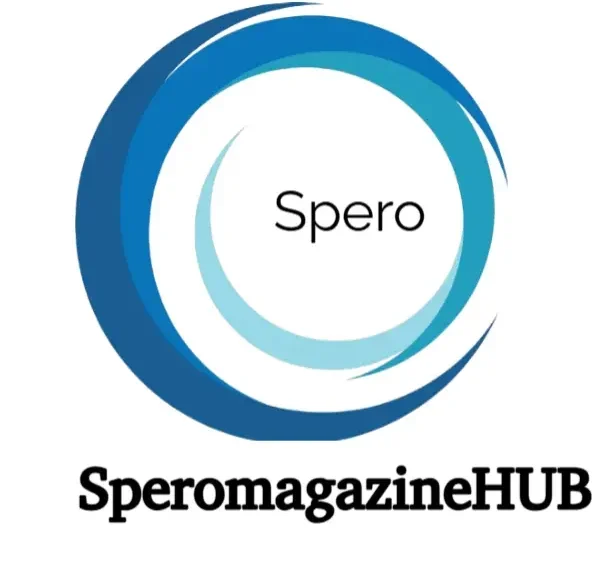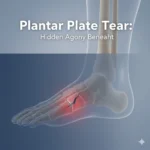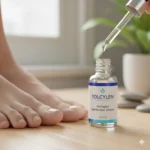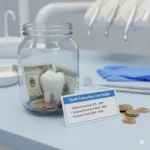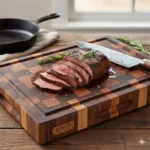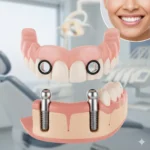There’s something hypnotic about a fade. You see it in skies. On fabric. In hair. And suddenly—on Ombre Nails. That slow slip from one color to another. A tiny sunset trapped on your fingertips. Feels alive, doesn’t it?
Ombre nails aren’t new. But they never feel old. You look at them once. Then again. Each time, a different mood. Sometimes soft like whisper. Sometimes wild like neon fire. They carry mood. Memory. Movement.
It began as an accident. Kind of. Someone sponged two polishes together, maybe out of boredom, maybe curiosity. The result? Magic. A blur that no solid color could match. That’s the charm. Imperfection that looks intentional.
The French word “ombré” means shaded. Or shadowed. But when it hit the beauty world, it meant freedom. No rules. Just blend. Just fade. Hairdressers used it first. Nail artists borrowed it quick. Instagram pushed it everywhere. Suddenly, every hand wanted that seamless slip of color.
Did you know? In 2025, searches for “ombre nail designs” hit one of the highest peaks since 2019. Everyone wanted a piece of that fade again. The gradient fever never left. It only slept.
Ombre stayed because it can change faces. Nude to white for brides. Black to silver for night outs. Lavender to blue for dreamers. You name it, there’s a blend for it.
Nail techs call it art. Clients call it therapy. Watching colors merge is oddly peaceful. Almost meditative.
Artists see canvas. Customers see comfort. Somewhere between both lies obsession.
This isn’t just about nails. It’s about what happens when art sneaks into everyday life. You carry beauty with you. On you. A reminder that little things can still feel special.
The Origins & Evolution of Ombre Nails
No one owns the ombre. It just… appeared. Like ideas do. Quietly.
Long before TikTok tutorials. Before nail guns and acrylic debates. Before hashtags. The gradient lived elsewhere. In sunsets. On silk. In old paintings where light never stopped softly shifting.
Then came fashion. The early 2000s. Hair first. Blonde to brown. Brown to red. That “grown-out roots” look people mocked, then copied. Because it looked real. Effortless.
Ombre hair became rebellion. Less maintenance. More edge. It told people—you can look perfect without trying. That message spread fast.
Nail artists noticed. Always do. They took the same idea. Instead of bleach and toner, they grabbed polish and sponge. Tapped. Dabbed. Blended. Until two colors melted into each other.
That first fade on nails? Nobody wrote it down. No record. But it was probably a creative who didn’t follow rules. Someone who didn’t wait for permission.
And suddenly, salons were buzzing. Photos spreading. Social media amplifying.
Boom. Ombre nails became a thing.
The 2010s Wave
Everything digital. Fast. Filtered. Instagram became the mirror of beauty. You didn’t have to be in Paris to see trends anymore. You just had to scroll.
A pink-and-white fade photo goes viral. Maybe it’s a bridal look. Maybe it’s a model’s close-up. Doesn’t matter. People screenshot. Try it. Post again. Loop begins.
By 2015, ombre nails weren’t just art—they were identity. The nail industry shifted. DIY kits appeared. YouTube creators started explaining “how to blend perfectly” with household sponges.
Every gradient carried attitude.
Soft peach fade? Romantic.
Dark plum to black? Mysterious.
Neon dip? Wild energy.
Nails became more than polish. They became personality pieces.
Baby Boomer Nails: The Classic Revival
Funny name. Strong story.
“Baby boomer nails” hit the scene when nude-to-white gradients mimicked the soft, natural French manicure. Elegant. Minimal. Timeless.
It wasn’t new. Just reborn. Like vintage jeans suddenly being cool again.
Clients loved how it grew out gracefully. Perfect for weddings. Work. Anywhere. No harsh lines. Just subtle sophistication.
And again, ombre adapted.
The fade became professional. Then playful. Then experimental again. It could sit in boardrooms or nightclubs. All in one manicure.
The Airbrush Renaissance
By 2022, nail techs got techy. Airbrush machines became salon essentials. Smooth, smoky blends replaced sponge textures.
That hazy effect? Flawless. Looked like mist trapped under glass. Futuristic yet soft.
Artists started playing with dimension—chrome layers over ombre bases, 3D textures, glitter gradients. Ombre stopped being just a “fade.” It became a foundation for everything else.
Did you know? Some luxury nail bars now offer digital ombre—tiny nozzles programmed to spray micro-fine pigment layers, creating pixel-perfect fades in minutes. Sounds sci-fi. Looks unreal.
From Trend to Culture
It’s not just a nail technique anymore. It’s language. Style shorthand.
You walk into a salon, say “ombre,” and no one asks what that means. They already know.
That’s rare. Most trends die explaining themselves. Ombre just keeps morphing.
Minimalists use soft pastels. Maximalists add glitter or flames. Goths fade into black. Dreamers fade into lilac mist.
Ombre became a mood translator. A little gradient that says who you are—without words.
There’s beauty in that evolution. A technique that survived the cycle. A style that still looks fresh fifteen years later.
You don’t see that often. Not in beauty. Not anywhere.
Maybe because ombre never pretended to be perfect. It embraced blur. Change. Time.
Just like people.
Techniques, Tools & Secrets Behind Perfect Ombre Nails
There’s an art to the blur. Not everyone gets it right. Some try once and quit. Some chase that perfect fade for years.
Let’s be honest. Ombre nails look simple. They’re not. That’s the trap.
The Base: Where Every Fade Begins
Clean nails. Always. File. Buff. Push cuticles. You know the drill. But for ombre, it matters twice as much. Every bump shows. Every flaw catches color.
Base coat first. Smooth. Thin. A little tacky layer helps the polish grip. Some use builder gel instead. Depends on the look.
Then comes the starting shade—the lighter one. Usually near the cuticle. It’s your foundation. The calm before the storm.
The Sponge Trick
This one started with makeup sponges. Cheap, easy, disposable. Artists dabbed color on the sponge. Two, sometimes three shades side by side. Tap tap tap on the nail.
Messy. But satisfying. The colors blur together like wet paint.
Some people use wedge sponges. Others prefer nail art foams or silicone blenders. Doesn’t matter. What matters is rhythm. Light hand. Quick dabs.
Let it dry. Do it again. Repeat till the blend feels alive.
Then seal with top coat. Watch the colors melt. Smooth. Shiny. Magic.
The Airbrush Era
Modern tech made it cleaner. Airbrush guns replaced sponges. Fine mist. Feather edges. No harsh lines. Feels like painting clouds.
Nail techs swear by it. But it’s not cheap. Machines, cartridges, cleaning. High maintenance.
Still, the finish? Flawless. Instagram-perfect every time.
Airbrush ombre lets you experiment—fade neon into nude, or chrome into matte. Tiny details that a sponge can’t do.
Gel vs. Regular Polish
Gel polish changed everything. More control. Longer wear. Blends better before curing.
With gels, you can play with layers. Mix, blend, freeze under UV light, keep building. Like sculpting light.
Regular polish dries too fast. You rush. You smear. Still, some pros love it. Old-school charm. Feels raw.
Both have a place. Depends if you want perfection or personality.
Tools That Matter
Let’s be real. It’s not about how fancy your tools are. It’s how you use them. Still, the right ones help.
| Tool | Purpose | Pro Tip |
| Sponge | Main blending tool | Use damp for smoother fades |
| Nail buffer | Smooth surface | Always buff gently after base coat |
| Flat brush | Clean edges | Dip in acetone for perfect cuticle line |
| Gel lamp | Cures layers | Short bursts to prevent wrinkling |
| Airbrush gun | Advanced ombre | Clean nozzle after every use |
| Mixing palette | Color control | Blend shades before sponging |
The Secret: Pressure & Patience
People think it’s about polish. It’s not. It’s about control.
Too hard and the gradient breaks. Too soft and nothing transfers. It’s like breathing—steady, intentional.
Ombre nails test patience. You learn timing. Drying. Layering. Watching how color reacts under light.
Ever seen someone stare at their nails under a lamp? That’s not vanity. That’s art inspection.
Each fade tells a story of hand pressure and hesitation.
Common Mistakes
We’ve all done them. Too thick layers. Uneven blending. Skipping cleanup.
Top culprits:
- Using dry sponges (causes patchy fades)
- Rushing layers
- Ignoring base prep
- Forgetting top coat (ruins illusion)
Quick fix: Always let the first layer set slightly before adding more. That half-dry stage helps colors merge instead of mix.
Pro-Level Ombre Tricks
Some nail artists drop sheer shimmer polish between layers. Adds depth. Looks like frost trapped under glass.
Others use pigment powders for ultra-soft transitions. Rub. Buff. Seal. The color moves like smoke.
And for the brave—reverse ombre. Dark at the cuticle. Light at the tip. Unusual. But stunning.
Did You Know?
In high-end nail competitions, ombre categories now score on consistency of fade. Judges check how evenly color moves across every finger. One nail off? Points gone.
Precision disguised as chaos. That’s ombre.
Ombre nails might look effortless. They’re not. They’re an exercise in control and surrender.
FAQs About Ombre Nails
1. What exactly are ombre nails?
Ombre nails show a color fade. One shade melts into another. Sometimes light to dark. Sometimes glitter to nude. It’s that soft gradient that makes nails look alive.
2. How long do ombre nails last?
Usually 3 to 4 weeks with gel. Regular polish fades quicker, about 7 to 10 days. Depends how much you type, wash, live.
3. Can I do ombre nails at home?
Yes. You don’t need a salon. Just a sponge, two polishes, and patience. Paint both shades on the sponge. Tap on nail. Repeat. Seal with top coat. Magic.
4. What’s the best polish for ombre nails?
Gel polish. It blends slower. Gives you time to play with layers. Cures clean under UV light. Regular polish works too—just move fast.
5. Why does my ombre look patchy?
Sponge too dry. Layers too thick. Or colors too far apart on the spectrum. Use damp sponge. Light pressure. Similar tones. Let each coat half-dry before the next.
6. Can I mix more than two colors?
Absolutely. Three or even four. Just keep them in harmony. Think sunset, not circus.
7. Are ombre nails professional enough for work?
Yes. Choose neutral blends. Nude to white. Beige to pink. They look clean, elegant, quiet. No one complains about soft fades.
8. What’s the difference between ombre and gradient nails?
None, really. Same concept. “Gradient” sounds more technical. “Ombre” more fashion. Both mean color that fades smoothly.
9. Do ombre nails damage natural nails?
No. Not if done right. The damage comes from removal, not polish. Always soak off gels gently. Don’t peel.
10. How do I keep ombre nails from chipping?
Top coat every few days. Avoid hot water for long. Wear gloves when cleaning. Treat them like jewelry, not tools.
11. What colors are trending for ombre nails in 2025?
Muted chrome. Pearl nudes. Dusty lavender into gray. Metallic blue fades. Think calm luxury, not loud glitter.
12. Can men wear ombre nails?
Of course. Color doesn’t belong to gender. Soft fades look cool on anyone who wants expression at their fingertips.
13. What’s the hardest part of doing ombre nails?
Blending without overdoing it. Knowing when to stop. The fade lives in restraint.
14. How much does a salon ombre manicure cost?
Anywhere from $40 to $120. Depends on technique, location, and nail length. Airbrush ombre costs more.
15. Can I add designs on top of ombre?
Yes. Rhinestones. Lines. Stickers. Foil. Everything sits better on a faded base. Ombre is like background music—makes any art feel fuller.
16. Are ombre nails still in style?
Yes. Always. Styles change, ombre bends with them. It’s not a trend anymore. It’s a category.
17. Can short nails pull off ombre?
Definitely. Just use soft tones. Avoid high contrast. Gradient makes short nails look longer.
